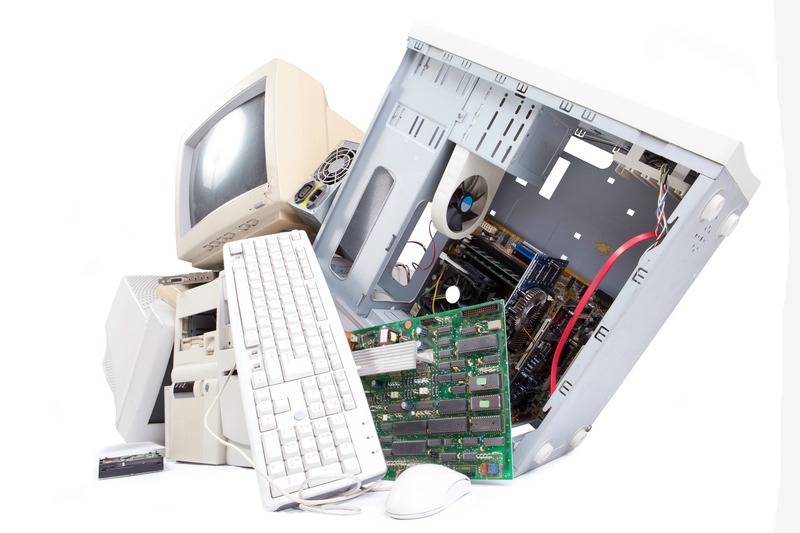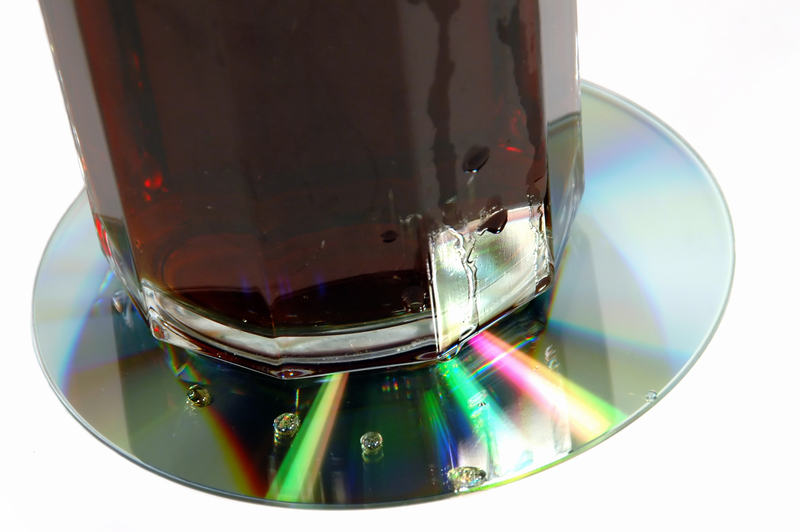Rethink Conventional Plant Pot Disposal: Eco-Friendly Solutions for a Greener World
As sustainability becomes increasingly important in our daily lives, it's time to rethink conventional plant pot disposal and explore more responsible, eco-friendly options. Millions of gardening enthusiasts and homeowners use a variety of plant pots every year. Whether they're made from plastic, ceramic, clay, or biodegradable materials, the question eventually arises: what should you do with these pots when they're no longer needed?
This comprehensive guide will illuminate why it's vital to reconsider traditional plant pot disposal and will provide sustainable solutions for responsibly managing old pots. By the end of this article, you'll have a well-rounded understanding of how thoughtful plant pot disposal can greatly benefit your home, your garden, and the planet.

Why Should You Rethink Traditional Plant Pot Disposal?
Plant pots come in many shapes, sizes, and materials. Sadly, conventional disposal methods--such as tossing pots in the trash--are harmful for the environment and miss out on numerous opportunities for reuse and recycling.
- Environmental Impact: Most garden pots, especially plastic ones, end up in landfills, contributing to the ever-growing plastic pollution crisis.
- Resource Efficiency: Pots that are discarded rather than recycled or reused are a loss of valuable resources and energy.
- Cost: Proper disposal and recycling methods can save municipalities money and reduce your own household waste costs.
Now, let's break down the environmental consequences of conventional plant pot disposal and why alternative approaches are not only necessary but also impactful.
Plastics and Landfills: A Growing Issue
The majority of plant pots used today are made from plastic, particularly polypropylene or polyethylene. These plastics are durable and weather-resistant, but their resilience is also what makes them so problematic for the environment. Plastics can take hundreds of years to decompose, and each year, millions of non-biodegradable plant pots are sent to landfills where they may never truly break down.
Additionally, when plastics are disposed of improperly, they can break into smaller fragments called microplastics, which inadvertently enter our soil, water, and even the food chain. This is why it's crucial to rethink plant pot disposal at every household and community level.
Sustainable Alternatives to Conventional Plant Pot Disposal
Luckily, there are sustainable, environmentally friendly alternatives to simply throwing away your old or unused flower pots and containers. Here are several actionable strategies you can use to minimize your environmental footprint and encourage positive change in your community.
1. Reuse and Repurpose Your Plant Pots
Reusing plant pots not only makes economic sense, but it also reduces demand for new pots and keeps useful materials out of landfills. Consider the following ideas:
- Plant Swaps: Organize or participate in local plant swaps where you exchange pots and plants with fellow gardeners.
- Storage Containers: Use old pots to store gardening tools, soil, or other small items around your home or shed.
- Creative DIY Projects: Decorate and upcycle pots for use as decorative containers, craft organizers, or even quirky bird houses.
- Propagation Stations: Smaller pots are perfect for propagating cuttings or starting seedlings indoors.
- Gifting Plants: Reuse clean pots to give away plants to neighbors, friends, or local community centers.
2. Recycle Plant Pots Responsibly
Recycling is a key part of responsible pot disposal. However, not all municipal recycling programs accept plant pots, especially those with dirt, labels, or non-standard plastics. Follow these steps:
- Clean Thoroughly: Wash out dirt, labels, and stickers, as contaminants can disrupt recycling processes.
- Check Local Guidelines: Contact your waste management provider or municipality to see if and how they accept garden pots for recycling.
- Retailer Programs: Many garden centers, such as Lowe's, Home Depot, and certain local nurseries, operate plant pot recycling programs. You can drop off your plastic pots for responsible recycling.
- Proper Sorting: Separate different materials, such as clay, terracotta, and plastic, so each type can be processed correctly.
Always check for the recycling symbol with a resin identification number, usually on the bottom of the pot, to see if the material is recyclable in your area.
3. Compost and Biodegradable Pot Disposal
With the rising popularity of biodegradable plant pots made from peat, coir, wood fiber, or paper, composting is easier than ever. These pots can often be placed directly into your compost bin or into the ground, where they naturally break down and enrich the soil. Here's what to keep in mind:
- Read Manufacturer Instructions: Not all "biodegradable" pots are created equal; check if the pot is truly compostable and if any treatment or removal is needed first.
- Home Compost Bins: If the pot is made from natural materials, break it up and add it to your compost as a brown (carbon-rich) material.
- Direct Planting: Some biodegradable pots are designed to go straight in the ground when you transplant seedlings, minimizing handling and root disturbance.
4. Donate or Return Old Pots
If you have a surplus of pots in good condition, there are several places that will gladly accept donations:
- Local Schools: Schools with gardening programs are often grateful for extra pots for student projects.
- Community Gardens: Non-profits and community gardens can distribute extra containers to those in need.
- Nurseries and Garden Centers: Some stores accept undamaged pots for reuse in their operations or for customer pickup.
- Art Programs: Art teachers and youth programs may repurpose pots for painting and creative projects.
The Pros and Cons of Different Plant Pot Materials
Striving for sustainable plant pot disposal is easiest when you understand the characteristics of each material type. Let's break them down:
Plastic Pots
- Pros: Lightweight, inexpensive, and widely available. If clean, many are recyclable.
- Cons: Made from non-renewable resources and slow to break down in landfills. Can be tricky to recycle if soiled or made from mixed plastics.
Clay and Terracotta Pots
- Pros: Made from natural materials, allow the soil to breathe. Attractive in gardens and homes.
- Cons: Heavy and fragile; broken pieces are rarely recyclable but can be used in garden beds for drainage.
Biodegradable Pots
- Pros: Break down naturally, improve soil health, and are sometimes made from renewable resources like peat, coconut coir, or wood pulp.
- Cons: More expensive and may not always be sufficiently sturdy for transport or longer-term use. Quality varies.
Ceramic Pots
- Pros: Durable, attractive, and long-lasting. Good for indoor and outdoor use.
- Cons: Not typically recyclable in curbside programs and can break easily. Donate or repurpose instead.
Creative Ways to Repurpose Old Plant Pots
If recycling or donating isn't possible, let your creativity shine! Here are some innovative ideas for reusing plant pots around the house and garden:
- Fairy Gardens: Create miniature landscapes with tiny plants, figurines, and stones.
- Vertical Planters: Attach pots to a wall or fence to create a vertical herb or succulent garden.
- Outdoor Lighting: Use upturned clay pots as bases for solar or LED garden lights.
- Garden Art: Paint and stack different sized pots into decorative totems or sculptures.
- Compost Helpers: Use broken pots for drainage in garden beds or as markers for plant rows.
- Pet Water Bowls: Clay and ceramic pots (thoroughly cleaned) make suitable outdoor water dishes for pets.
Encouraging a Circular Economy in Gardening
Rethinking conventional plant pot disposal is about more than just reducing waste--it's about shifting towards a circular economy, where products are reused, recycled, or returned to the earth at the end of their life cycle. By making thoughtful choices about pot materials and end-of-life handling, gardeners can help close the loop and contribute to a healthier, greener world.
How You Can Make a Difference
Every gardener and homeowner can have a positive impact by:
- Choosing pots made from recycled or biodegradable materials whenever possible.
- Supporting nurseries and retailers that offer take-back or recycling programs.
- Educating friends and family about responsible plant pot disposal options.
- Collecting and donating surplus pots to community organizations or schools.

Frequently Asked Questions About Plant Pot Disposal
Can I recycle all types of plastic plant pots?
No. Not all plastic types are recyclable in home waste programs. Always check for a recycling code and confirm your local guidelines.
What should I do with broken pots?
Broken ceramic or clay pots can be reused as drainage material in garden beds or repurposed for art projects, but they generally aren't curbside recyclable.
Are biodegradable pots better for the environment?
Yes--if disposed of properly. They break down naturally, reducing landfill waste and often improving soil health. However, their environmental benefit depends on sourcing and proper composting.
Where can I take unwanted plastic pots?
Some garden centers and nurseries run dedicated recycling or pot return programs. Local schools, community gardens, and non-profits may also accept them for reuse.
Conclusion: The Future of Plant Pot Disposal
Rethinking conventional plant pot disposal is a crucial part of sustainable gardening and responsible waste management. Whether you're a hobby gardener or a professional, adopting eco-friendly disposal methods for pots can have a significant positive impact on the environment while helping your local community flourish. By choosing to reuse, recycle, donate, or compost, you play an important role in creating a healthier, more mindful world--one pot at a time.
Let's reimagine plant pot disposal as both an individual and a community effort. Share your experiences, support local recycling initiatives, and inspire your neighbors to join you in building a more sustainable future for our gardens and our planet.
Every responsible step taken today sows the seeds for a greener tomorrow.